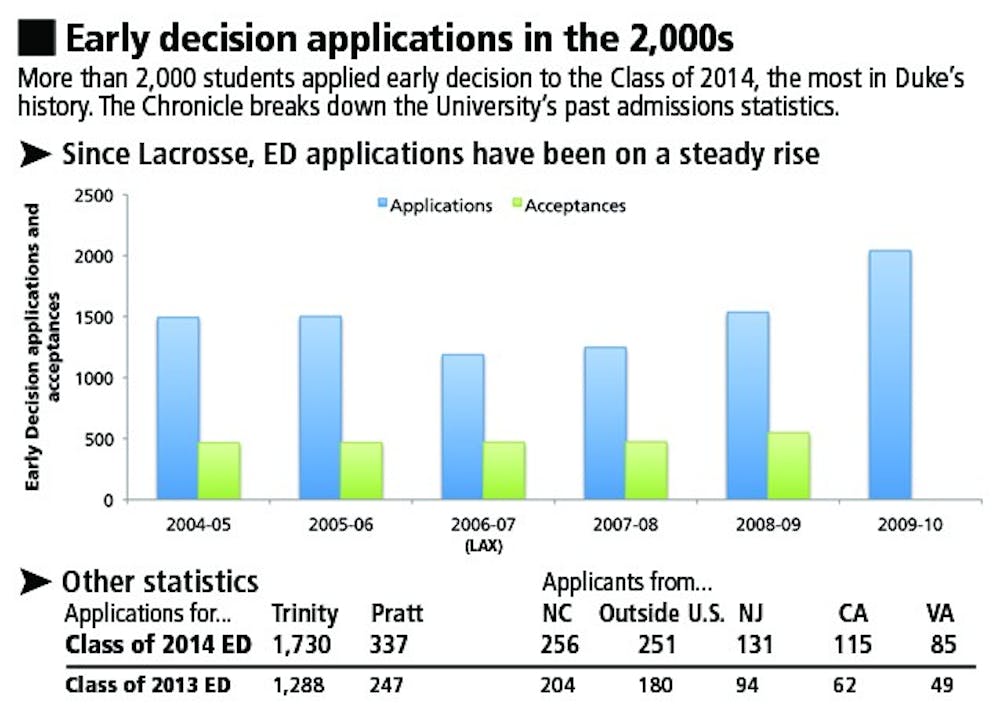A record number of high school students have applied early decision to Duke’s Class of 2014.
The number of applicants increased 33 percent, from 1,535 last November to 2,040 this year—an unexpected increase, Dean of Undergraduate Admissions Christoph Guttentag said.
“I think if anybody had said this Fall, ‘You’ll see a 33 percent increase in applications, and you’ll break your previous record by 350, I think nobody would have thought that was a reasonable prediction,” he said.
The previous record was set in 2001 with 1,589 early decision applicants.
Of this year’s applicants, 1,703 applied to the Trinity College of Arts and Sciences and 337 to the Pratt School of Engineering, proportions similar to last year’s 1,288 and 247 applications, respectively.
Despite the current economic climate, the same proportion—51 percent—of early decision applicants indicated plans to apply for financial aid this year as last year.
“As we saw last Spring, it seems that the economy hasn’t had a [negative] effect on the macro level on our applicant pool—quite the opposite, in fact,” Guttentag said.
In light of the University’s budget constraints, the Office of Undergraduate Admissions cut back on recruiting by visiting fewer high schools and leaving current undergraduates behind on recruiting trips.
“That’s the odd thing—there were no extra or unusual recruitment efforts this year, we were a little more conservative with our recruitment,” Guttentag said.
It is unclear what factors contributed to the unexpected jump, he said. Provost Peter Lange noted that it may take a few more weeks to determine what led to the increase.
The largest increases by geographic location are spread out across the country, indicating little to no pattern in recruitment or applications. The number of applications from California and Virginia increased 85 and 74 percent respectively. The number of early decision applications from outside the United States increased 39 percent to 251.
This year, admissions officers emphasized that the acceptance rate is higher for early decision applicants, Guttentag said. He added that students and families may have also taken note of the University’s need-blind admissions process and financial aid offerings.
“I think that people got the message that in fact... we’re really working to make Duke affordable from a wide range of economic backgrounds,” he said. “This has probably sunk in some more than in the past.”
In December 2007, Duke announced its new Financial Aid Initiative, which provides more need-based aid for students from lower-income families. The University requires no parental contribution from families with incomes less than $60,000.
Guttentag noted that it is currently difficult to predict what this increase means for regular decision applicants, although it is unlikely that there will be a significant decrease in regular decision applications. He added that the percentage of early and regular decision applicants that make up the Class of 2014 will largely depend on the quality of the early decision pool and the number of students admitted in December.
“I’m pleased for the students who have indicated that we’re their first choice,” Guttentag said. “I think it’s a reflection of the fact that even in a challenging economy, all kinds of people appreciate the value and the meaning and the benefit of a Duke education.”
Get The Chronicle straight to your inbox
Signup for our weekly newsletter. Cancel at any time.

